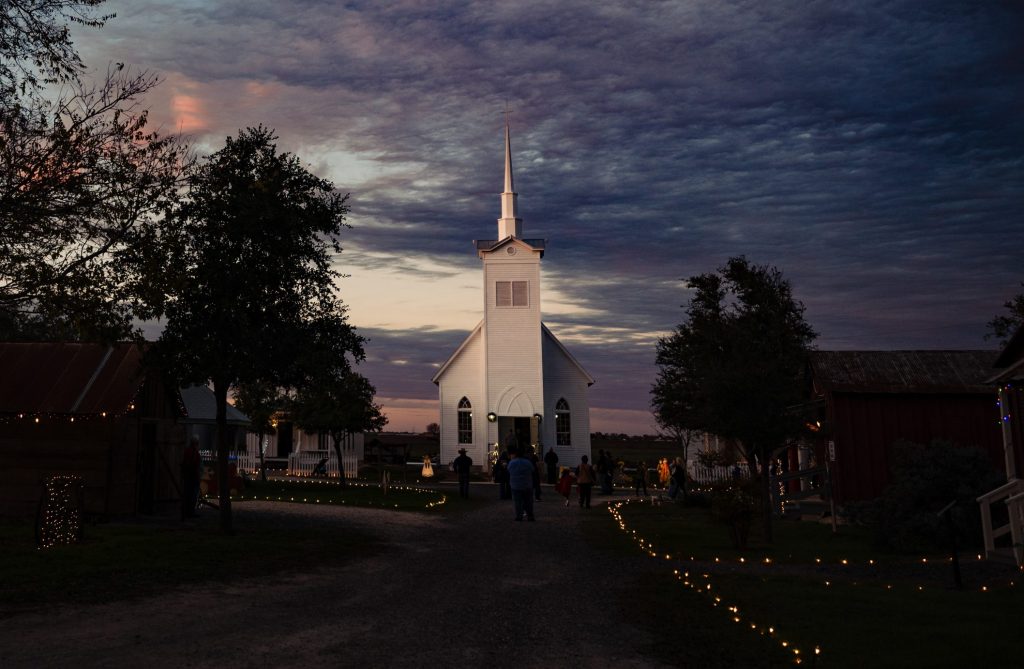Green
Acres
An urban dweller ventures to far West Texas with a dream to transform a barren desert into a lush forest
Photographs by
Christ Chávez
Shaun Overton tends to the land at Dustups Ranch
Framed by the vastness of the Chihuahuan Desert, a lone man faces the camera. All around him, rough hills roll off into the distance. Clouds trail across an enormous sky, and mountain peaks decorate the horizon. “My name is Shaun Overton,” he says. He grins, then points to the barren ground at his feet. “And I’m turning this into a desert forest.”
Growing trees in this unforgiving terrain is a promise Overton makes every time he introduces a new episode of Dustups. The video series documents his attempt at “turning 320 acres of wasteland into a desert forest in the most isolated spot in Texas.”
Overton’s so-called wasteland, Dustups Ranch, is situated in the foothills of the Eagle Mountains about 42 miles southeast of Sierra Blanca, the tiny seat of Hudspeth County. The narrow Rio Grande snakes through the desert about 5.5 miles to his south. It’s hard to say whether Overton’s spread is truly the most isolated road-accessible spot in all of Texas, and it will take years, if not decades, to judge the success or failure of his project. But his quixotic vision for transforming the all-but-treeless property has stirred imaginations around the globe.
Videos of Overton digging dirt, stacking rocks, running a bulldozer, and performing other chores—either working alone or in tandem with up to half a dozen volunteers—have racked up millions of views on TikTok and YouTube since the first Dustups video was posted the day after Christmas in 2022. It hardly seems to matter that Overton doesn’t even pretend to know what he’s doing.
“I think it’s pretty clear from the videos that I’m just figuring it out as I go and have the time and resources,” Overton tells me.
As climate change makes Texas hotter and drier, Overton hopes to inspire more property owners to grow trees throughout the state. Skeptics including scientists and environmentalists point out that deserts aren’t wastelands. They also wonder why he wants to grow a forest in an area that’s seemingly unsuitable for trees. Overton’s fans, undeterred, call him “the man with the impossible dream.”
“Will I succeed?” he asks in the introduction to his first video. “Let’s find out!”
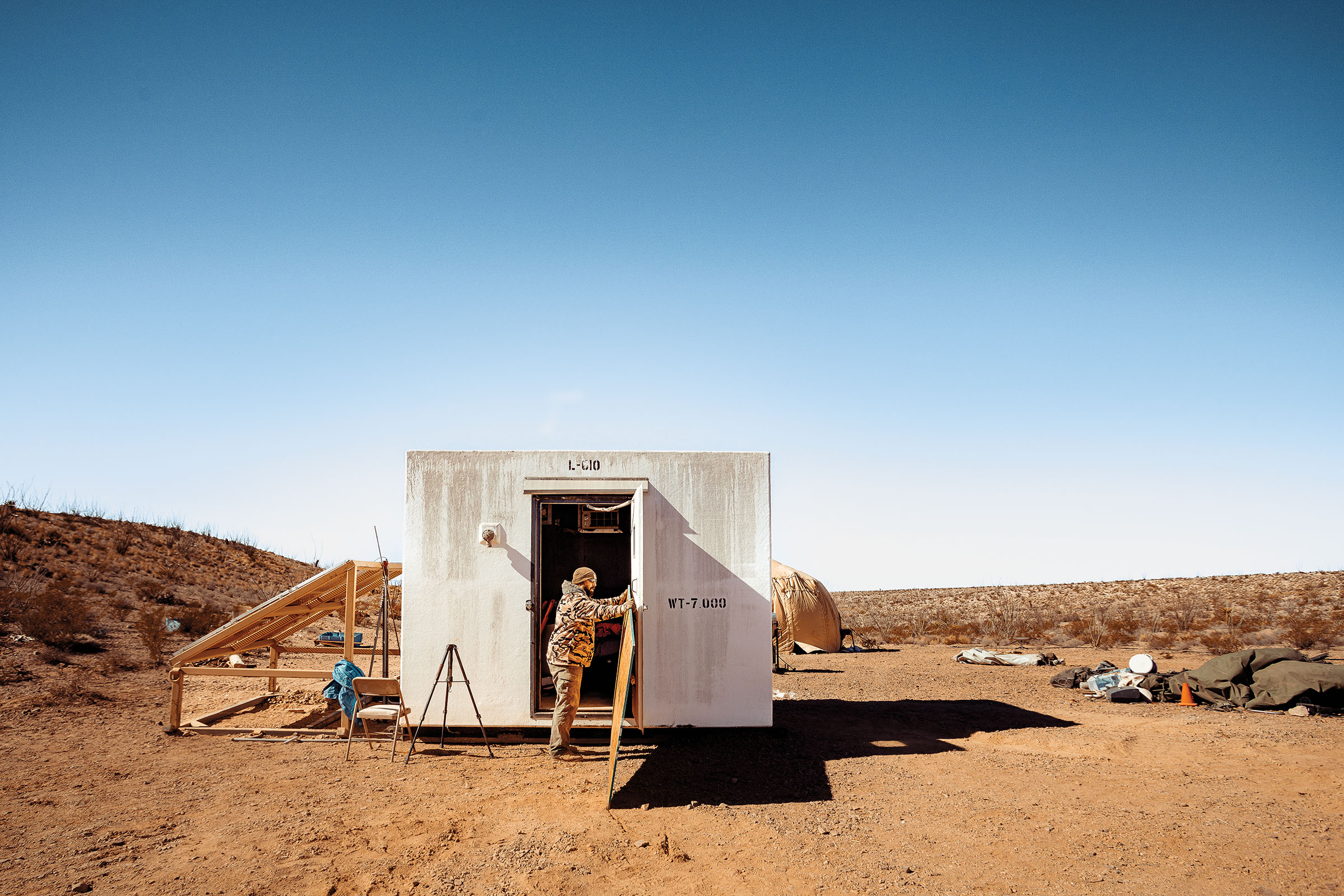
Volunteer Daniel Beard repairs the Dustups campsite
Bearded and bald, with a frame built from years of jiujitsu training, the 43-year-old Overton is a newcomer to far West Texas. He grew up in the Fort Worth suburbs and still lives there with his wife, Neidy Overton, and their three kids. Entering middle age, he’d grown financially comfortable from his career as a software programmer and small-business owner, but he also felt burned out. Overton enjoyed watching online videos about permaculture, a farming movement that preaches harmony with nature. Like many urban dwellers, he fantasized of returning to the land, of building something with his own hands. “I’m not meant for the suburbs,” Overton says. “I need to have a big dream.”
In the frontier myths of Texas, big dreams often point west. When Anglo ranchers crossed the Pecos River and arrived in the uplands of the Trans-Pecos region in the late 1800s, they were greeted by seas of grasslands that must have seemed unending. “If you look at old pictures of Alpine and Marathon, there’s not a piece of brush in sight. It’s all grass,” says Jeff Bennett, a habitat restoration hydrogeologist who worked for Big Bend National Park for 15 years.
Flowing creeks were lined with cottonwood trees, and mesquite, creosote, and other brushy plants were held in check by periodic grass fires. It’s possible, but not documented, that Native people set fires to encourage new growth of grass in the area. Regardless, a tragic transformation was about to occur.
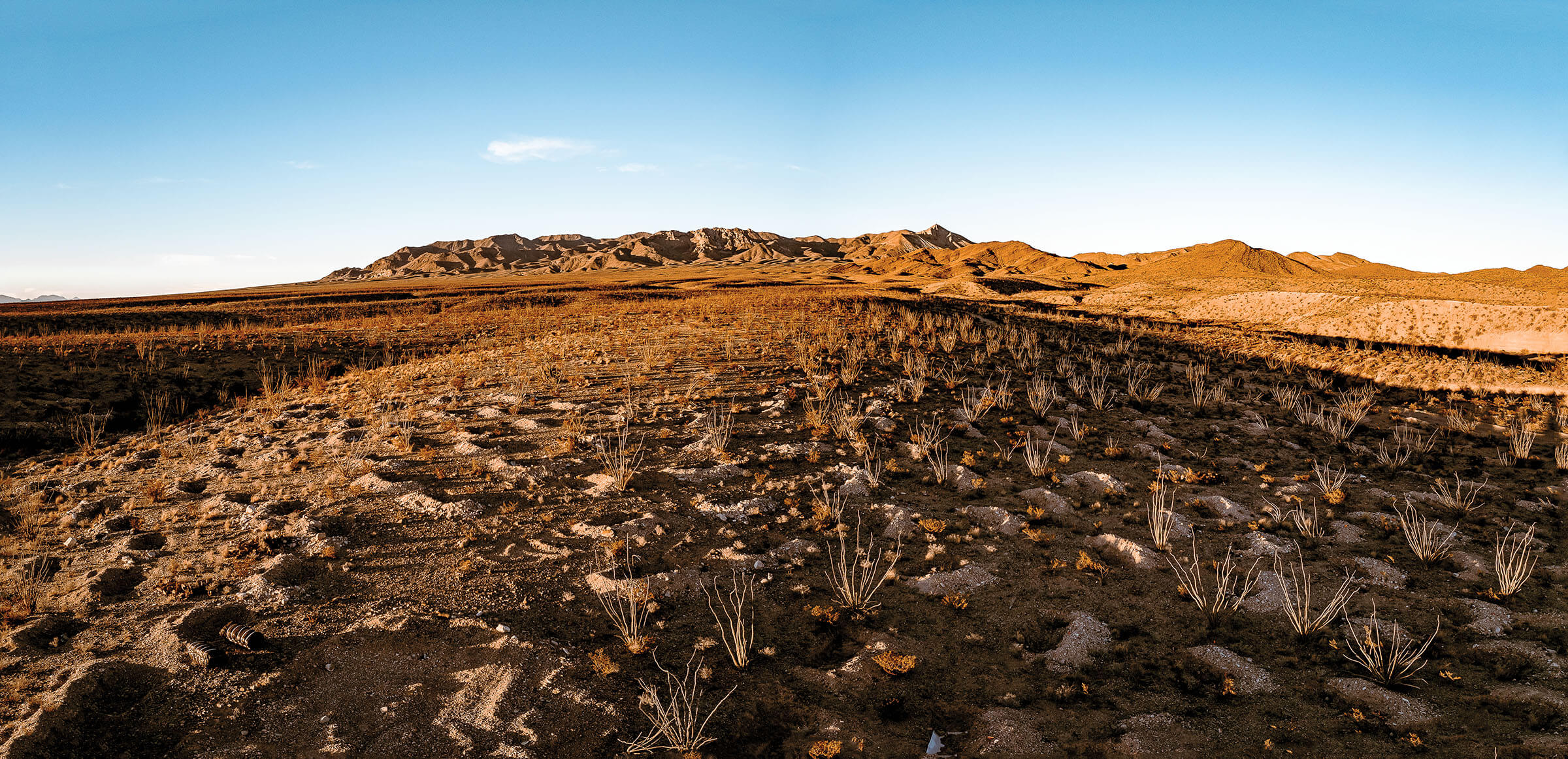
The breeding grounds for a future forest
Overton’s fans, undeterred, call him “the man with the impossible dream.”
In just a few decades, newly introduced cattle, sheep, and goats ate the grass faster than it grew back. With no roots to hold it in place, the topsoil washed away. The ground became hotter, drier, and more compacted, which repelled rainwater. Unable to soak into the earth and replenish shallow aquifers, the runoff from rain instead rushed into ever-widening gullies and was swiftly channeled away. Springs and streams went dry.
This doom loop of desiccation and erosion has ravaged arid landscapes around the globe, from the Australian Outback to parts of Africa, Asia, and the southwestern United States. Climate change is exacerbating the problems caused by the loss of grasses and trees.
Far West Texas has been hit shockingly hard. The region has lost an estimated 90-95% of its native grasslands, according to a study published in a 2022 edition of the journal Conservation Science and Practice. Throughout much of the Trans-Pecos, native grasslands have been replaced by highly eroded badlands that shrubs and thorny plants have colonized, making it all but worthless for ranching.
In Big Bend National Park, which is about 45% high desert grasslands, the transformation to badlands is so complete that many visitors don’t even realize they are camping, hiking, and communing in an unnatural landscape. After 40,000 head of cattle, sheep, and other livestock were removed from the park in 1947, federal employees tried to reestablish grass in the early 1950s. “We had not done right by this land,” Big Bend National Park superintendent Lemuel “Lon” Garrison wrote in his 1988 memoir, The Making of a Ranger, “but we could give it another chance and it would bloom again.”
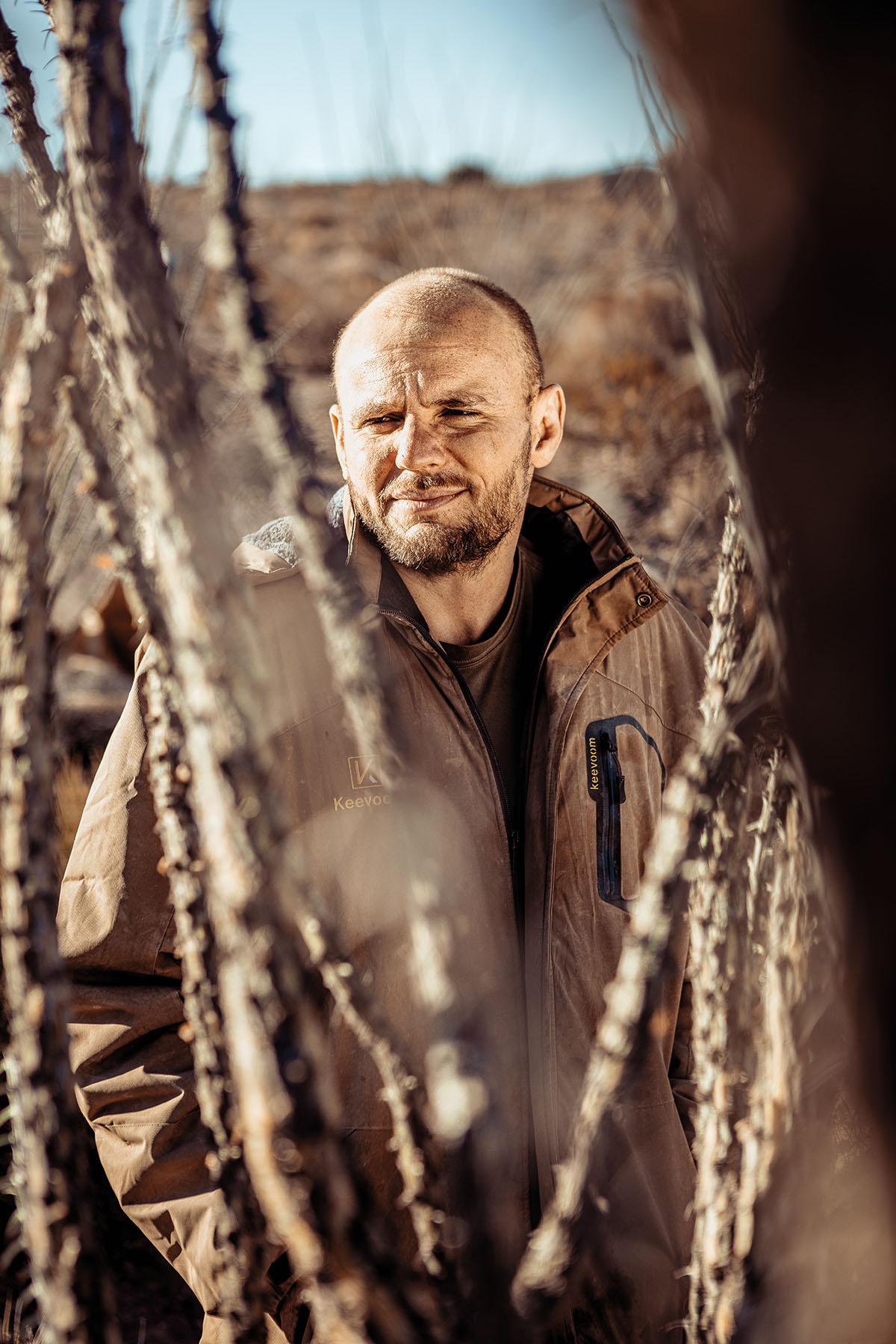
Overton, framed by ocotillo, examines his land
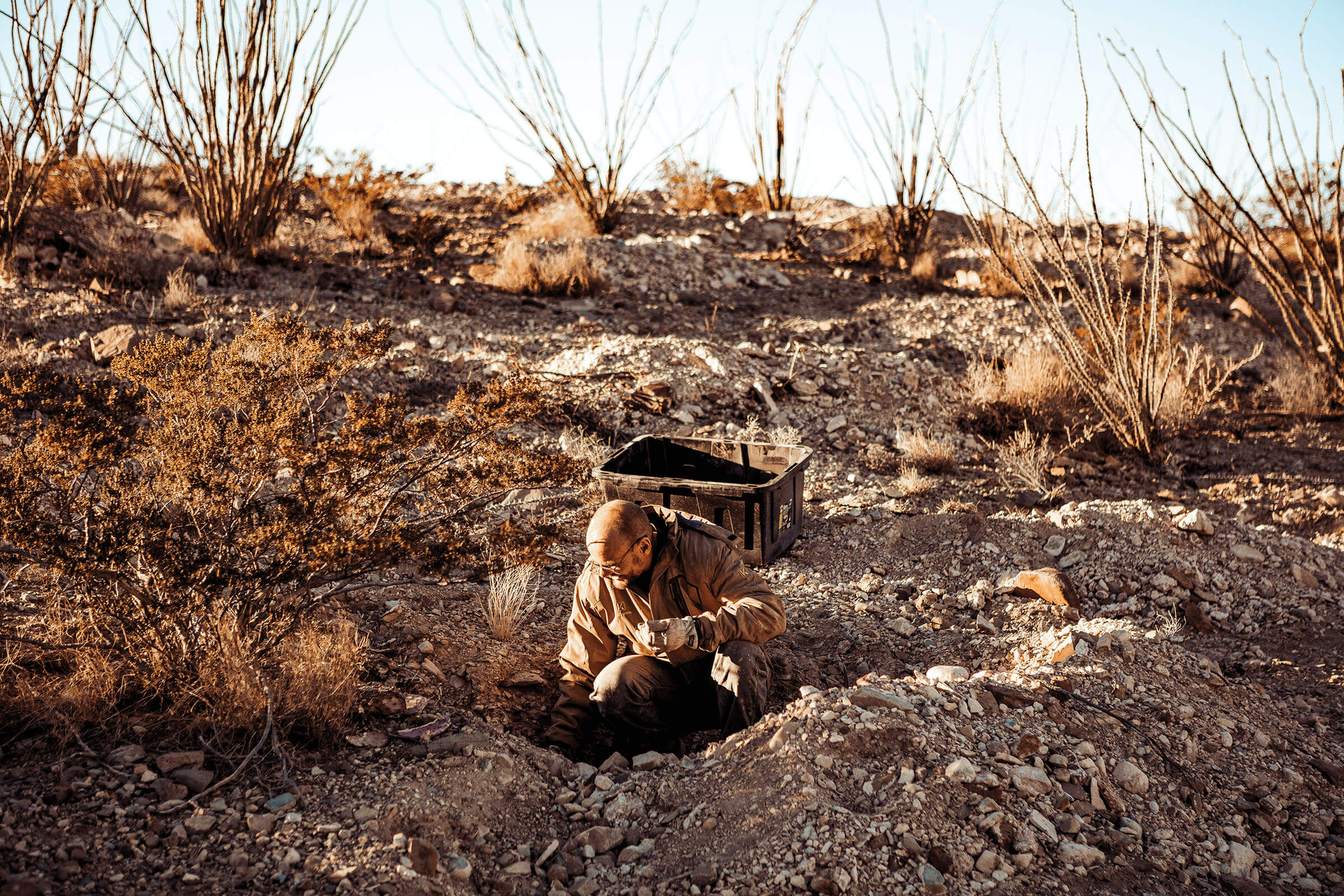
Overton plants cacti
In Tornillo Flat, an area on the park’s northern side, park employees built structures at the bottom of gullies to slow erosion. They contoured and pitted the land to slow runoff, while adding native grass seeds. Results were mixed. Grass has continued to grow in the pits they dug, but it hasn’t spread out from there, and erosion has continued. “Restoration of grassland ecosystems is more complex than originally thought,” park ranger Christina Rinas wrote in a 2018 report titled “Grasslands Not Badlands.”
In the early 2000s, Bennett and other park employees conducted another experiment to restore grass to the denuded terrain. They planted native grass and forb seeds in 500-foot-long strips of land. These were covered with piles of dead brush to slow erosion and shade the seeds, which lowers the soil temperature. More than two decades later, the strips of grass remain plainly visible, in stark contrast to their desolate surroundings.
“This was bare ground. I mean, completely bare,” says Bennett, who retired in 2018 and currently works for the American Bird Conservancy. “Now I’ve got grass growing, and there’s evidence that those strips are expanding a little bit.”
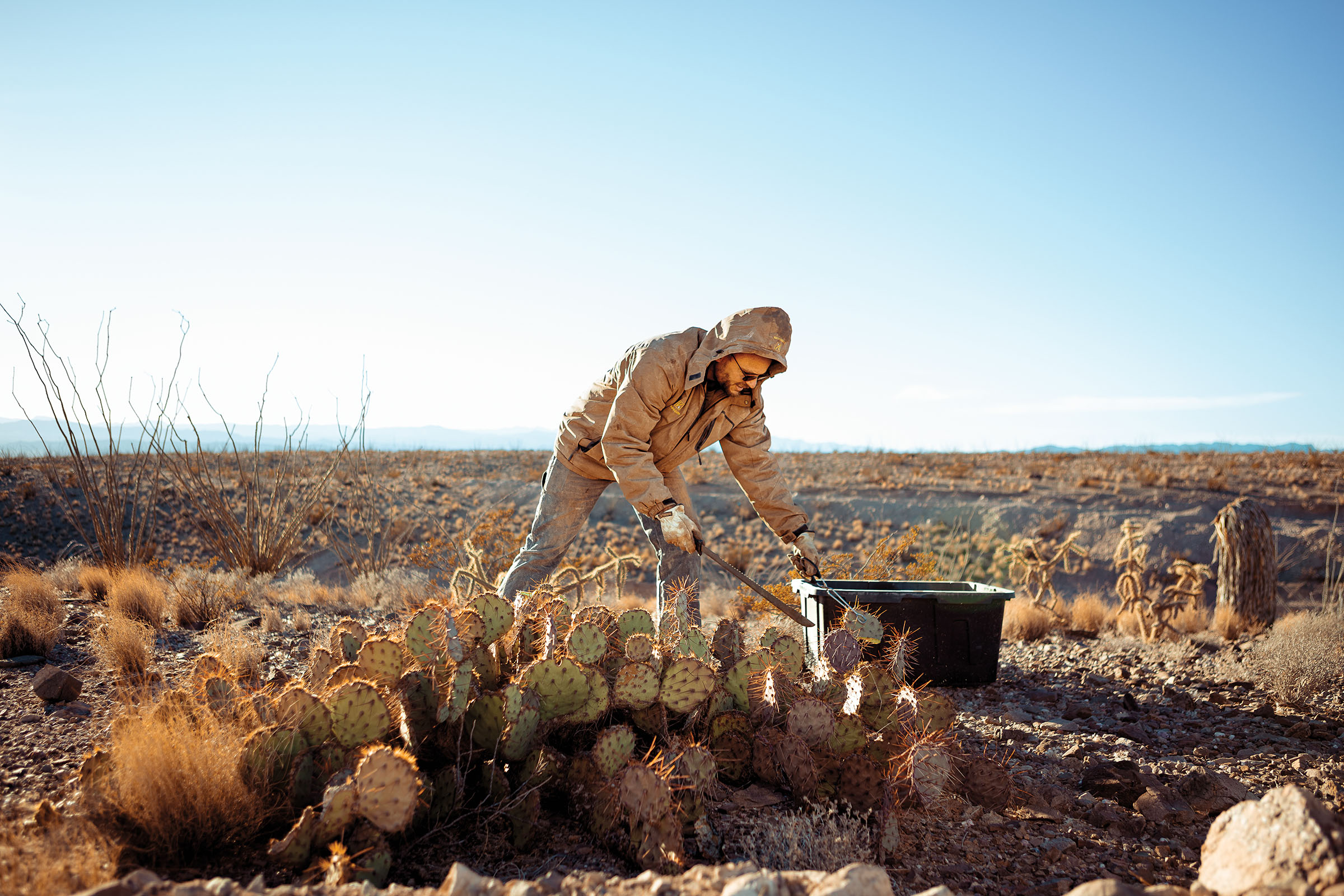
Overton harvests cacti to plant in one of his “dirt baths”
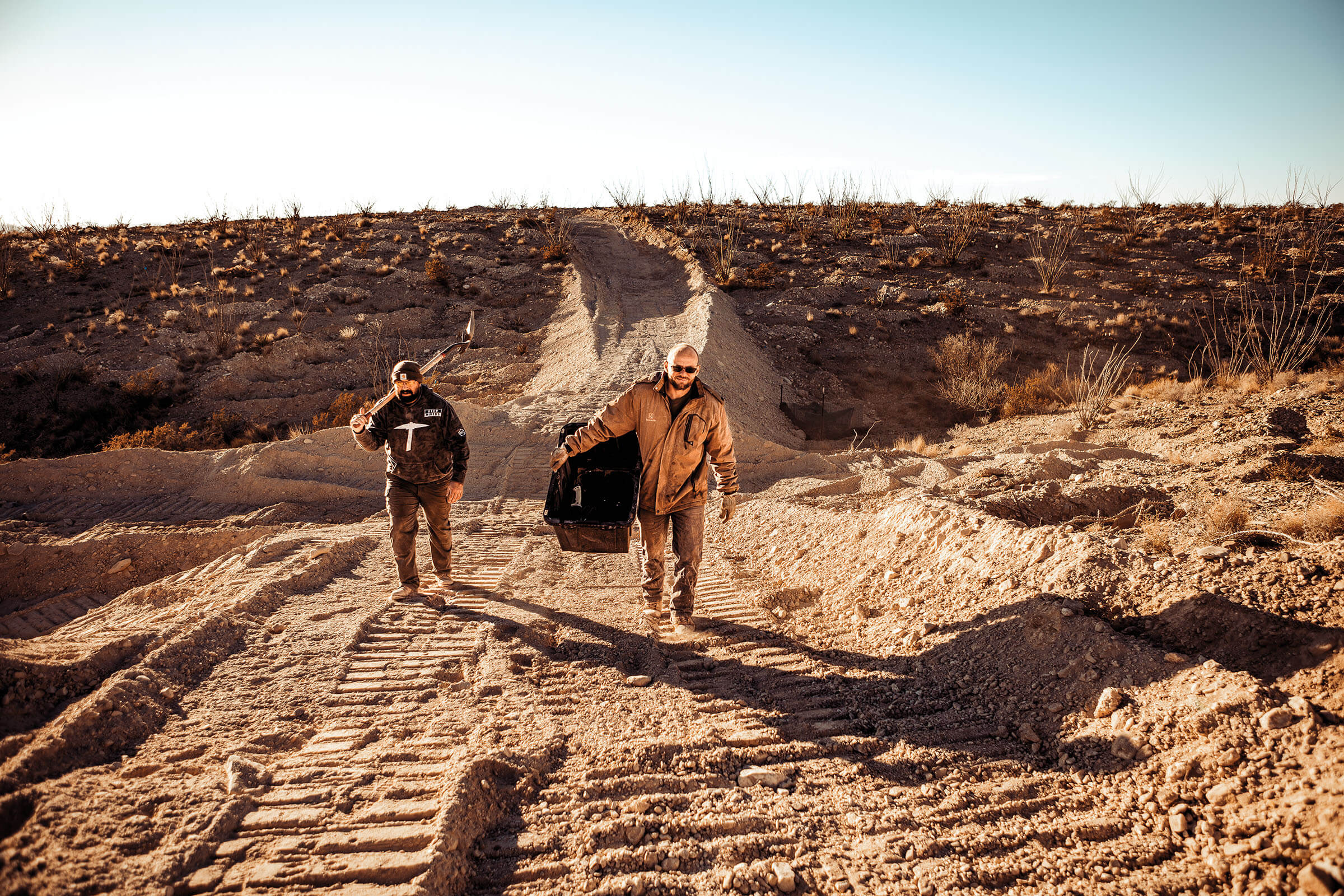
Daniel Beard (left) is one of half a dozen volunteers who have worked with Shaun Overton at Dustups Ranch.
Big Bend is a vast national park that sprawls across 800,000 acres. Bennett’s project restored grass to only about 300 acres. Naturally, when Overton visited the park for the first time in 2018, it was easy for him to miss his predecessor’s handiwork.
“When I went to Big Bend, and I saw the erosion, I could tell that something was just off,” Overton says. “This was a degraded landscape. It made me decide that whenever I do my big project, I wanted it to be in West Texas.”
Four years later, Overton came across an online listing for the property that would become Dustups Ranch. At $247 per acre—just under $80,000 for the entire plot—it seemed like a steal. Despite Overton’s enthusiasm about his real estate investment, Neidy was skeptical. Every trip to the property would entail a nine-hour drive from Fort Worth. Upon arrival to this off-the-grid land, there would be no water, no electricity, no shade from the desert sun. “What is wrong with you?” Neidy asked him. Ultimately, though, she gave her blessing.
Overton visited four or five times in the first year, usually by himself, to camp, hunt, and explore his empire of dirt, rock, scrub brush, gullies, and panoramic views of the Eagle, Indio, and Quitman mountain ranges. Two dramatic canyons, one named Oxford and the other Cottonwood, converge on the property.
Overton’s neighbor Bill Addington, who lives in Sierra Blanca but owns 3,000 acres of family land a few miles from Dustups Ranch, told Overton there were still cottonwood trees growing in Cottonwood Canyon as recently as the 1960s. But cottonwoods require a lot of water. The water is gone. “To my knowledge,” Overton says, “there’s not a single cottonwood tree in this entire valley of hundreds of thousands of square miles. There’s certainly not a cottonwood tree in Cottonwood Canyon.”
As far as Overton could tell, there is just one mature tree on his entire 320 acres: a catclaw acacia, a thorny native plant that many would categorize as a shrub. “I call it Lone Tree,” he says.
In addition to permaculture videos on YouTube, Overton also enjoyed watching videos about projects to sustainably “green the desert” by harvesting rainwater and promoting vegetation growth in arid lands around the globe. In 2007, African leaders began a massively ambitious project to grow a 9-mile-wide “Great Green Wall” of trees and grasses to combat the southern expansion of the Sahara Desert.
Stateside, rancher Josiah Austin built a small rock dam to protect a road from washing out on his property in the Chiricahua Mountains of southeastern Arizona in 1982. When Austin noticed green grass growing by the dam, he built more. Twenty years later, he had gathered and stacked loose rocks into thousands of simple check dams throughout his property, and scientists were taking note of his land’s transformation. A 2018 study by the United States Geological Survey compared Turkey Creek, the stream that bisects the ranch, with an adjacent creek that did not have dams. The study found Turkey Creek was clearer and shallower, with less exposed bedrock, and it flowed three or four weeks longer into summer. Turkey Creek also flowed about half as slowly as the neighboring creek and carried 28% more water overall. Moreover, Austin’s check dams stored 200 tons of soil per year. The dams control erosion and encourage plant growth. Austin’s one-of-a-kind project had turned his ranch into an oasis by maintaining water where it had been lost over time, the USGS reported.
Although such projects can take decades to complete, they can help mitigate the effects of climate change by, among other things, sequestering carbon and reducing air and ground temperatures. It’s not hard to find before-and-after videos that present deforested terrain transformed into landscapes of lush grass and leafy trees. To Overton, the results were inspiring. “It’s totally doable,” he says.
First, Overton would build small rock dams and use heavy machinery to reshape the landscape to capture more rainwater. Then, in a process called ecological succession, he’d encourage very small plants and lichens to grow, followed by grasses, forbs, and cacti. The climax of the cycle would be fruit and nut trees, including persimmon, fig, jujube, and maybe pecans. Unwittingly, he was following the path of British horticulturist Robert Hart, who in the 1980s pioneered the concept of growing crops in a forest.
“I want to have the land yield as much abundance for myself and for the local wildlife as possible.”
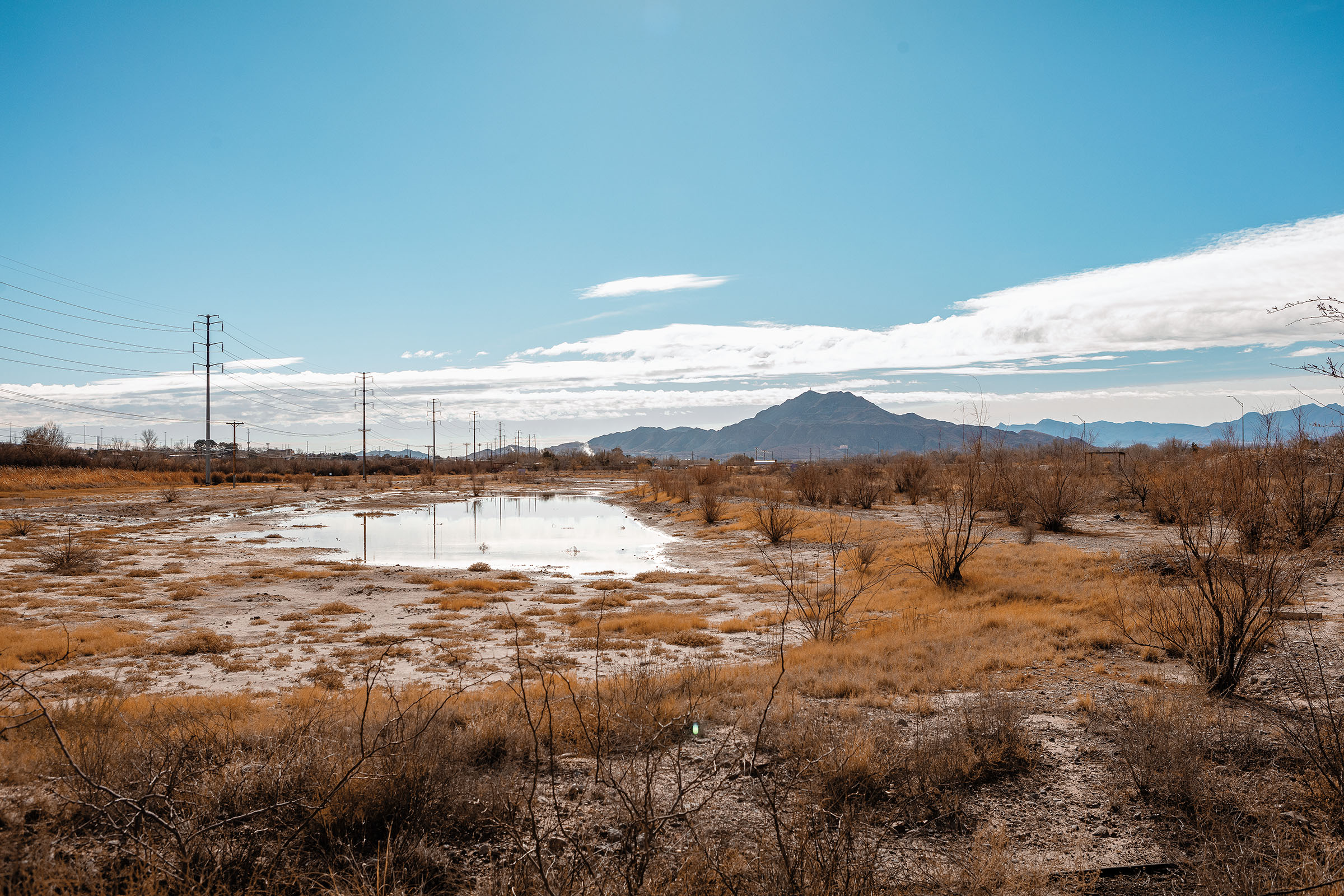
Keystone Heritage Park and El Paso Desert Botanical Garden with Mount Cristo Rey, in Sunland Park, New Mexico, in the background
Nearly any conservationist would have encouraged Overton to stick to native plants and focus not on planting trees but on restoring the land to its natural habitat—mostly grass. While Overton avoids religion and politics in his videos, he is a Christian who believes God calls on humans to steward their land for productive use.
“If it was just about restoration,” Overton explains, “then I probably would stop at grasslands. But for me, abundance is a fundamental value, and as long as it’s sustainable, I want to have the land yield as much abundance for myself and for the local wildlife as possible. I think a forest is the most abundant thing that I can create.”
Inconveniently for Overton, he had no formal training or prior experience in relevant fields such as rangeland ecology, hydrology, or agriculture, unless you count a small backyard garden in Fort Worth. With the cheery confidence of a high-tech professional, he figured he would fail early and fail often before inevitably realizing the perfect hack.
“I really like jumping into things where I have no experience, where it’s clearly very difficult,” Overton says. “I enjoy that process of struggling and learning and accomplishing something.”
Overton knew it would take years, if ever, to make a profit from agriculture. Maybe he could generate a side income on YouTube in the meantime. Within two months of posting his first video, the YouTube channel for Dustups Ranch had received 2 million views. On TikTok, he landed 15 million views in just 30 days. The money from advertising revenue still isn’t much, he says, but he’s found his audience.
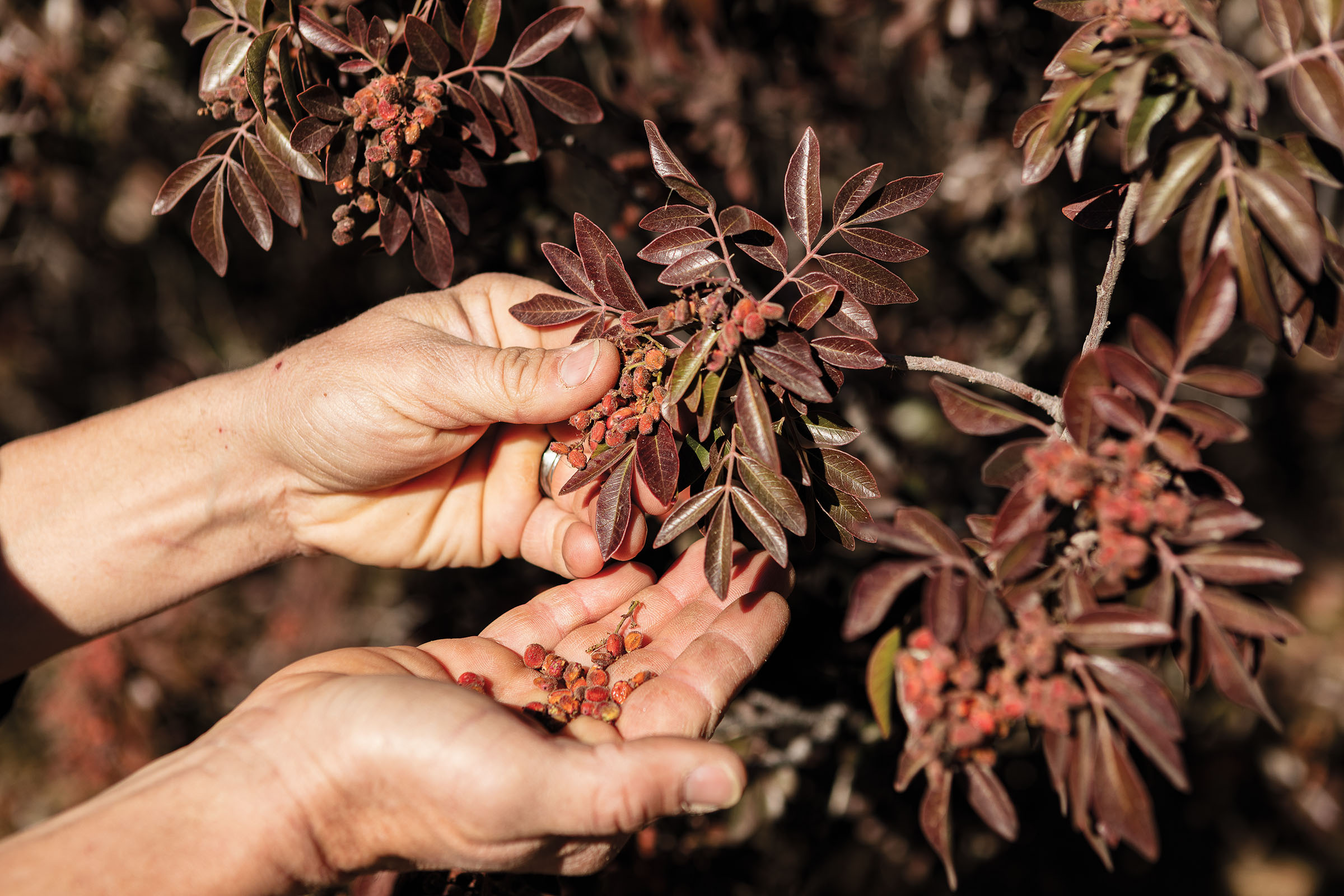
Sumac berries are edible and have a tart taste
On social media, novelty and relatability carry more currency than expertise. Overton’s everyman approach and his willingness to learn and fail on camera quickly endeared him to a community that has grown online and in real life. He now spends one week per month on the ranch and is often joined by volunteers who come from near and far to stack rocks for small dams, scatter cactus pads to “pioneer” plant growth, and perform other tasks for free on Overton’s private property.
“I volunteered to come out here and made a good friend,” Daniel D. Beard, a frequent volunteer and military veteran who lives in El Paso, tells Overton in one video.
Overton and his crew bring in water and food. They utilize solar panels for electricity and satellite internet. They sleep in tents, although Overton is working on a permanent shelter.
“People have bought into the vision. You can’t buy that. You can’t pay people to care,” Overton says. “I’m still surprised and very grateful. I never would have expected people to come volunteer on my land.” Last summer, permaculture and reforestation enthusiast Doug Foreman flew all the way from Seattle to spend a weekend volunteering at Dustups Ranch. “Seeing the project up close inspired a lot more confidence in its long-term success,” Foreman says. “It’s a huge project, but Shaun is not going half-cocked. He’s been persistent and systematic.”
Overton recently began using the bulldozer he purchased to put in a dam for a pond—again, learning as he goes. He’s also using it to build terraces along a hillside where he hopes to soon plant fast-growing “pioneer” trees that can withstand the harsh conditions of the desert. Once those trees are established, he wants to add fruit and nut trees.
Addington says he is reserving judgment until he’s had a chance to visit Overton’s property. “Shaun is conservation-minded. He really is. He cares about the land, and he wants to improve it,” says Addington, 67, a longtime environmental activist who has made headlines over the years for, among other things, defeating a proposed nuclear waste site near Sierra Blanca. When asked if Addington thinks a desert forest is possible, he pauses. “Not a forest, no,” he says. “You can catch water and grow things. Ranchers have done that out here before. It’s not exactly new, to be honest.”
But Addington has noticed the attention Dustups is bringing to Hudspeth County, both in the form of online views and the volunteers who flock from around the state to work on the property. “I’m interested in what Shaun’s doing to get more people out here, so they’ll actually appreciate the land. You only protect what you love, right?” he says. “Most people drive through here at 80 miles per hour. They don’t realize what’s out here.”
Bennett, the hydrogeologist who restored strips of grass in Big Bend National Park, was not familiar with Dustups, but he offers a word of warning to anyone using heavy equipment to reshape the desert landscape.
“If someone’s doing a lot of manipulation of the surface hydrology, I think that’s a fool’s errand,” he says. “Water weighs a lot, and you’re liable to cause a failure that blows everything out. All of a sudden, you’ve created a big erosion site that you will have a very hard time fixing.”
Mike Gaglio, the owner of High Desert Native Plants nursery in El Paso, has spent the past 16 years restoring grasslands and wetlands in the Chihuahuan Desert by adhering to a process called restoration ecology. This is most notable in his role as an advisor for the City of El Paso’s Keystone Heritage Park desert wetlands restoration project. Gaglio assumes nature can heal itself if given the right conditions.
“Nothing protects the soil surface quite like grass, and grass roots are very deep,” he says. “The deeper those roots go, the deeper the moisture goes.”
To stop the erosion of gullies, Gaglio and his crew members build hundreds of dams the height of just one rock. As a one-rock dam captures sediment, vegetation should begin to grow, stabilizing the soil. Gaglio then builds a second one-rock dam, raising the soil a little higher. It’s a painfully slow process, but it’s relatively foolproof.
“Building soil in a desert environment just takes a long, long time,” Gaglio says. “Everything but erosion takes more time in the desert.”
On a bright, sunny morning in September, Overton and his miniature goldendoodle, Ace, greet me from Overton’s pickup truck on an unpaved road south of Sierra Blanca. For about two hours, over increasingly hairy pathways, I tail them back to the ranch, where Ace investigates the rocks and brush while Overton shows me around.
In addition to rock dams in gullies and washes, Overton has dug out dozens of bathtub-sized holes on the face of a hill. Each one fills with water during rains. I don’t see any plants that I would consider trees. Overton shrugs. “You’ve got to bring back that water before you worry about the trees,” he says.
In a gentle draw below the hill, we approach a triangle-shaped enclosure of perhaps 30 square feet. The metal pen is covered by a shade cloth, which I help Overton unfasten. He pulls back the material, revealing an assemblage of vibrant green plants.
“Oh wow,” he says. “This is super encouraging!”
Overton points to a seedling with pretty, oval-shaped leaves. He identifies it as moringa, an edible and drought-tolerant tree native to India. Nearby is candlestick cassia, a small tree that blooms with showy yellow flowers. This tiny garden, Overton says, is an island of fertility, a thriving microforest. We admire the moringa and the cassia and the rest of his tender plants. The odds are stacked against them, but that’s life in the desert.
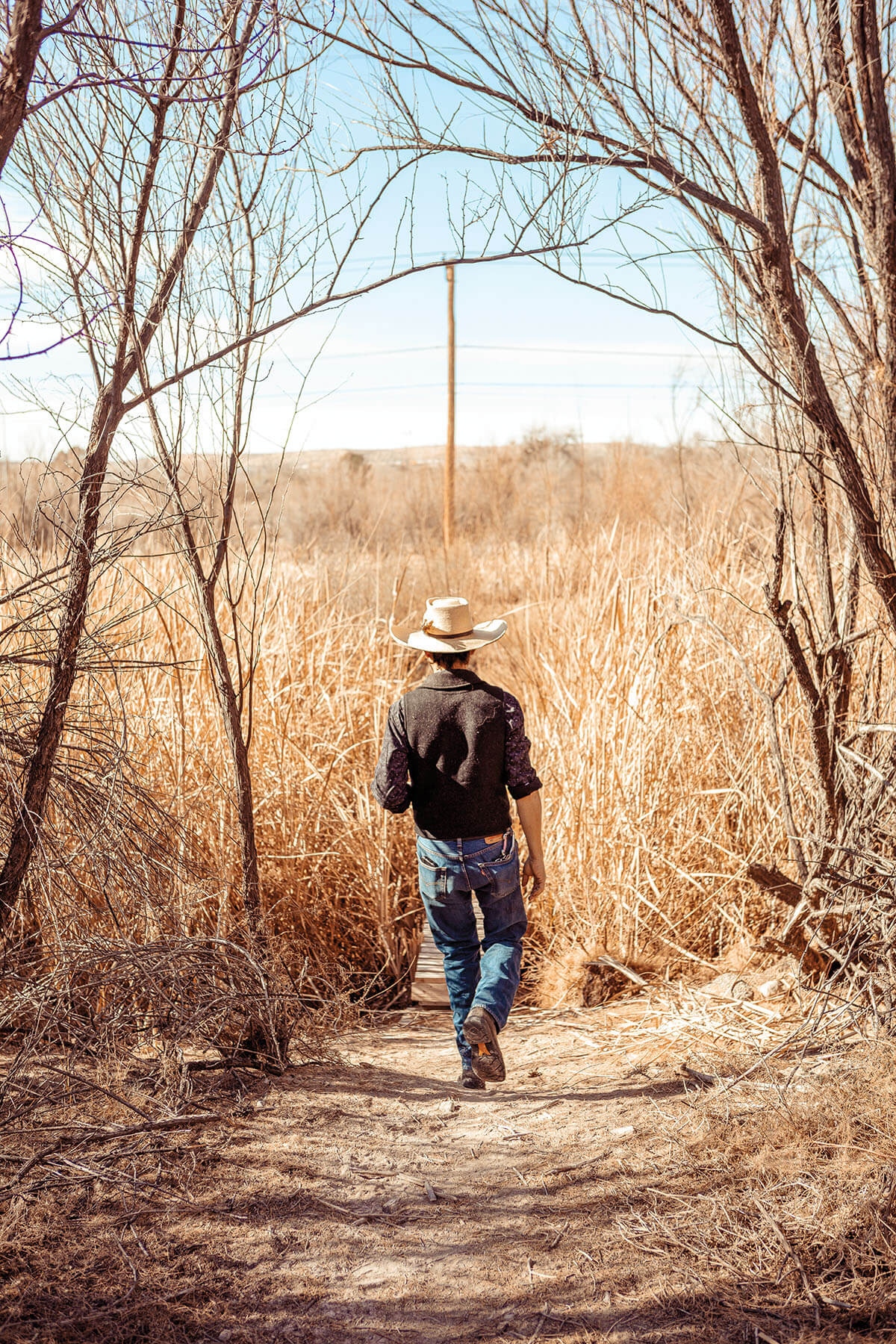
Mike Gaglio walks through Keystone Heritage Park in El Paso, where the public can see the results of his efforts restoring a desert wetland along the Rio Grande.



